|
|
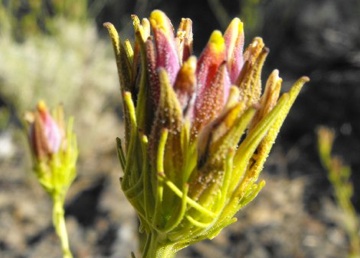
|
Panamint Bird's Beak
January/February
Although not the most attractive flower in the Snapdragon Family, Panamint
Bird's Beak (Cordylanthus eremicus) is nonetheless an interesting plant. The
odd thing about this plant is that its flowers never really seem to open.
The result is a flower that sort of resembles the beak of a bird, which
obviously is how it got its name. This flower blooms from July to October
and is found growing in Pinyon-Juniper forests in the Inyo and Panamint
ranges. An interesting tidbit of information relating to this plant is that
many members of its genus are root parasites.
(Click here for more info!)
|
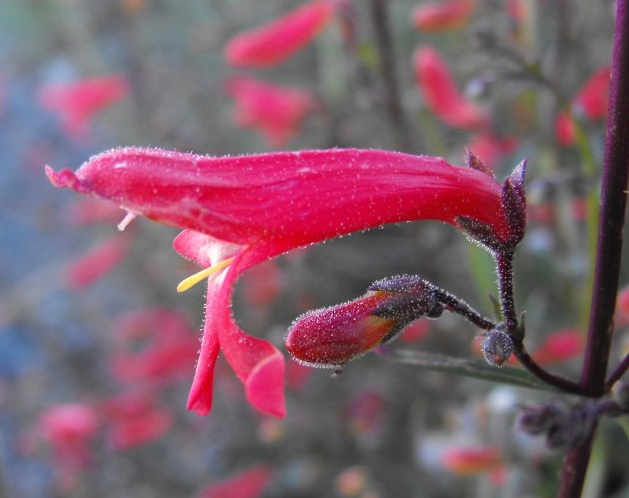
|
Bridges Penstemon
March/April
Bridges Penstemon (Penstemon rostriflorus) is one of several members of the
genus Penstemon that produces red, trumpet-like flowers and that is found in
the Death Valley area. It is also quite common in the Sierra Nevada range
and it is found in Nevada and parts of Utah growing at elevations above 5000
feet as well. The distinguishing feature of this penstemon is the reflexed
lower petals or lower lip of the flower. In fact, some plant enthusiasts
claim that these reflexed petals look a little like the flippers of a seal.
(Click here for more info!)
|
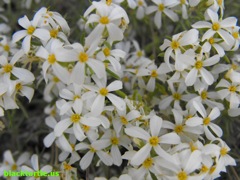
|
Granite Gilia
May/June
Linanthus pungens is a plant that grows in the Death Valley area that has
seen a lot of name changes. In fact, two varieties of this plant were
recognized by Mary DeDecker, who listed them as Granite Gilia (Leptodactylon
pungens pulchriflorum) and Prickly Phlox (Leptodactylon pungens hallii).
Interestingly, Edmund Jaeger listed this plant as Gilia pungens tenuiloba
and provided the common name as Prickly Gilia. Even more interesting is that
Calflora.org lists this plant under the common name Granite Prickly Phlox,
although the image server at berkeley.edu provides captions containing every
combination of Granite, Prickly, Gilia, and Phlox, that might sound like a
reasonable common name, with their image collection for this plant. Just
goes to show you, sometimes the name of a plant is more complicated than you
might expect!
(Click here for more info!)
|

|
Alpine Penstemon
July/August
If you do much hiking at higher altitudes in the Great Basin region, you're
likely to notice mats of tubular, purple flowers during July and August.
These flowers can be so dense that the small plants that they are attached
to can't be seen. This plant produces some of the most showy flowers that
you're likely to come across above treeline. I encountered this plant on
recent hikes to White Mountain Peak and Cottonwood Lakes Basin.
(Click here for more info!)
|
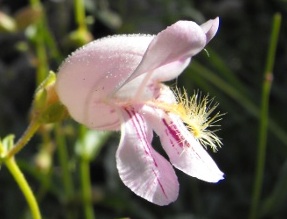
|
Panamint Penstemon
September/October
Panamint Penstemon (also known as Desert Beardtongue) is quite common on
both the Argus Range side and the Panamint Range side of Panamint Valley.
The pink flowers appear during May and July. Close inspection of the flowers
reveals purple "nectar guides" and an interesting, fuzzy, tonguelike
appendage that emerges from the flower tube, which was undoubtedly the
inspiration for one of the common names of this flower.
(Click here for more info!)
|
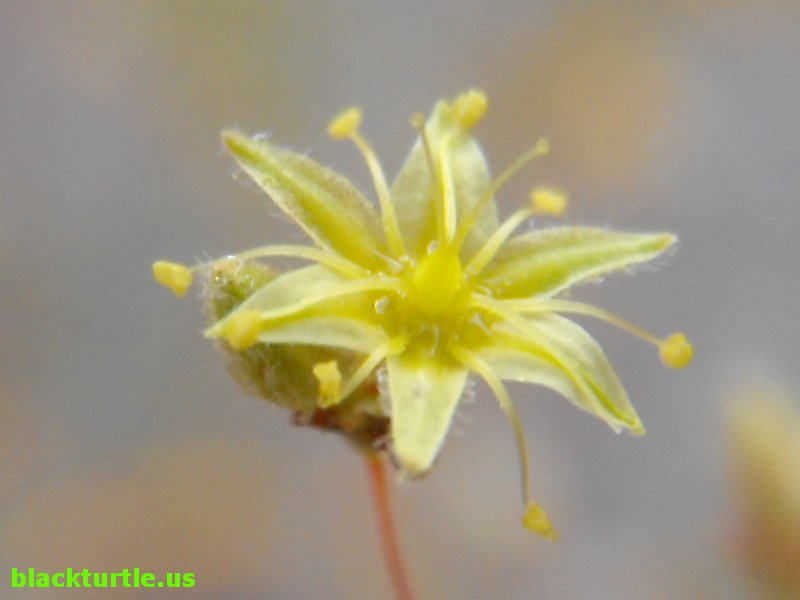
|
Desert Trumpet
November/December
This plant is most well-known for it's inflated stem. The flowers, on the
other hand, are so small and inconspicuous that most people never even
notice them. This is despite the fact that not only does this plant produce
a large number of flowers, but it also produces flowers for up to seven
months out of the year. In fact, during a hike this last week in Isham
Canyon I encountered quite a few of these plants in bloom!
(Click here for more info!)
|
|
| |
|

blackturtle.us
PLANT
BLOG
BLOG INDEX
ASSOCIATED SITES:
Trona News
Rusky Ed
Any Place Education








|

















